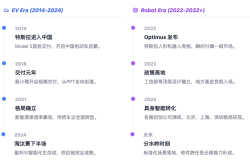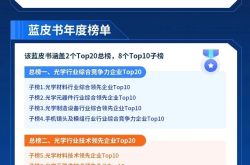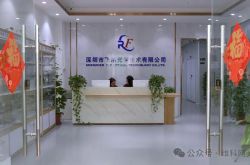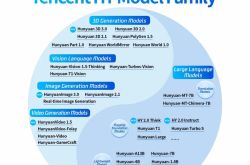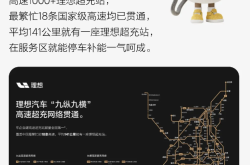E-commerce's Third Pole: The Emergence of Decision Flow E-commerce
![]() 07/22 2025
07/22 2025
![]() 593
593
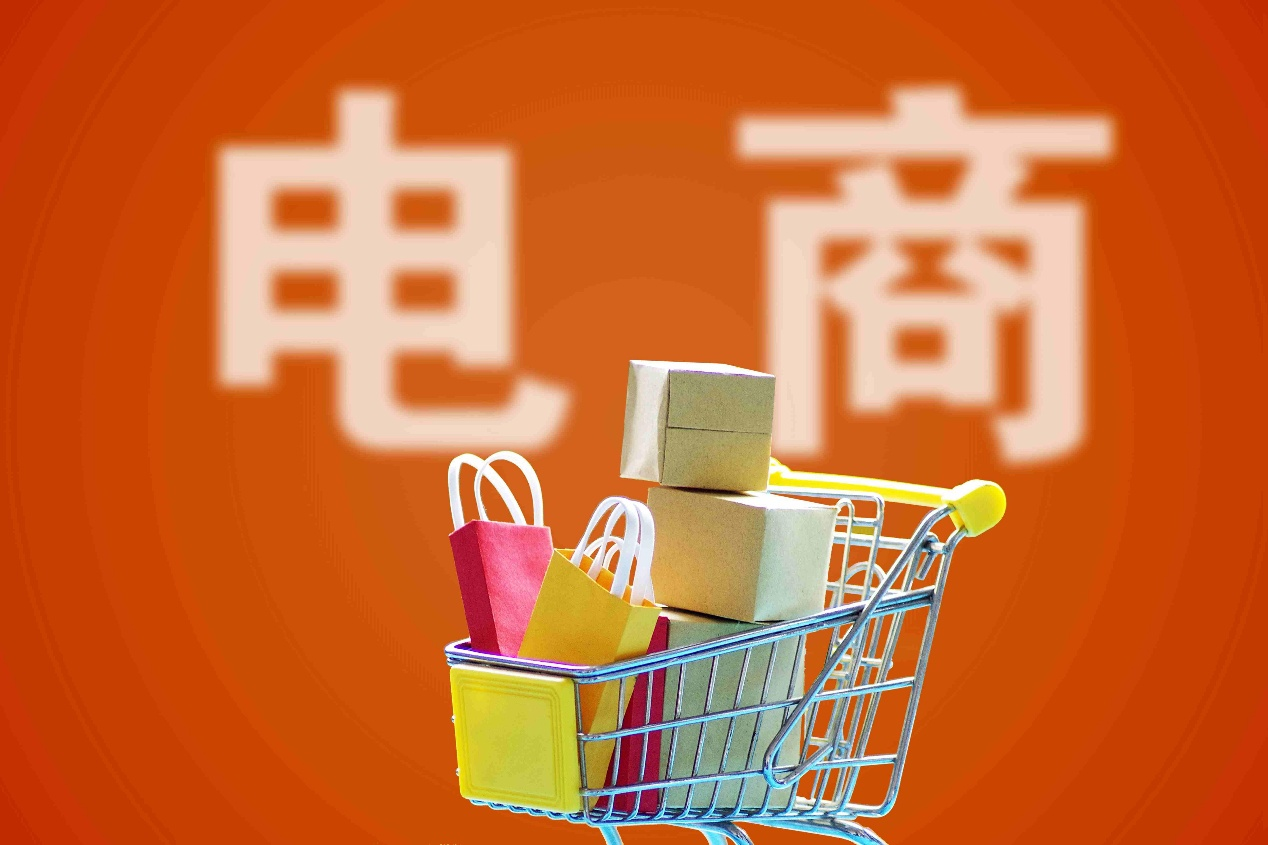
Editor-in-Chief: Li Yonghua
More than half of 2025 has elapsed, yet the anxiety pervading the e-commerce industry remains undiminished.
The waning effectiveness of live streaming, the poor conversion rates of content, and the stagnation in shelf growth—these perennial issues resurfaced with new cracks during this year's 618 shopping festival, suggesting that the industry is once again at a pivotal juncture.
E-commerce Dilemma: Content Weakness, Shelf Aging
Over the past decade, the underlying logic of the e-commerce industry has undergone several transformations, evolving from 'shelf e-commerce' in the 2010s to 'content e-commerce' in the early 2020s:
Shelf E-commerce: Emphasizing search and structured presentation, it focused on efficiently matching supply and demand for goods.
Content E-commerce: Leveraging content forms such as recommendations, influence marketing, and short videos to spark consumer impulses, guiding users from 'visibility' to 'purchase intent'.
Both models fueled growth in their respective eras. However, as user needs continue to evolve, these paths now face new adaptation challenges.
According to data monitored by Xingtu, this year's 618 saw a total transaction volume of 855.6 billion yuan, a year-on-year increase of 15.2%. On the surface, this represents a slight recovery compared to the same period last year, but beneath the surface lies a deeper structural rift: instant retail surged by 18.7%, while community group buying declined by 9.1%. Users' consumption habits are quietly shifting from stockpiling to immediate use, while many merchants remain stagnant.
Simultaneously, operational costs and conversion efficiency on platform sides have entered a phase of refined management. In the face of increasingly rational users, understanding their needs and providing effective responses has become a common challenge. Platforms are actively exploring ways to break through, whether it's by adjusting content strategies, optimizing recommendation logic, or promoting tighter closed loops in the transaction chain.
At this stage, where user attention is scarce and choices are becoming more rational, the e-commerce industry desperately needs new ideas. It's no longer about merely attracting eyeballs or stacking products; rather, it's about rethinking the core process of 'how users make purchase decisions'.
This is the context in which 'decision flow e-commerce' is gradually emerging as a new paradigm.
E-commerce's Third Pole: The Emergence of Decision Flow E-commerce
Following shelf e-commerce and content e-commerce, the e-commerce industry is quietly welcoming a third paradigm: decision flow e-commerce.
Unlike the 'browsing' nature of shelf e-commerce or the 'scrolling' nature of content e-commerce, decision flow e-commerce is based on a 'searching' model. It doesn't compete for users' attention but accompanies them through a process of thought. By redesigning the consumption path around 'making a choice', it utilizes AI and search capabilities to guide users from vague questions to clear decisions: not 'seeing and buying', but 'thinking clearly before buying'.
In shelf e-commerce, users already know what they want to buy, and the platform provides the most and cheapest options. In content e-commerce, users do not have specific needs; they simply 'scroll and get tempted'. In decision flow e-commerce, users come with questions—they need to be understood and guided to make the most suitable decision for themselves.

This is not a simple return to rational consumption but a rational evolution involving AI. The platform no longer merely displays products but serves as a 'decision assistant', utilizing structured knowledge, personalized matching, dynamic Q&A, and other capabilities to break down complex problems layer by layer, ultimately presenting a clear and credible set of purchase recommendations.
For example:
'Which floor washer is suitable for homes with pets?'
'Recommendations for foundation that is suitable for oily skin and non-allergenic?'
'How to choose an entry-level DSLR camera and lens?'
These are not questions that can be decided in three seconds. Users are not lacking in products but in a clear path to choose from. The underlying logic of decision flow e-commerce is to understand real needs, integrate credible information, and ultimately provide decision-making advice.
The competitiveness of decision flow e-commerce stems from two key points:
1. Understanding the real intent behind users: Not just 'search keywords', but the user's current confusion, scenario, budget, and emotions.
2. Integrating complex information and generating credible advice: Freeing users from the ocean of fragmented information and providing structured, logical, and well-founded answers.
This path from 'vague to clear' is not suitable for being solved through content feeding or shelf stacking. It requires language understanding, knowledge modeling, semantic reasoning, and precise perception of users' decision-making psychology. Put simply, content e-commerce tempts you, while decision flow e-commerce helps you understand.
In today's era of fragmented traffic and declining user patience, 'allowing users to make informed choices' is becoming a new scarce ability.
Baidu E-commerce: A Representative Player in Decision Flow E-commerce
If search is the starting point for users to express their decision-making intentions, then Baidu may be the player most likely to spearhead the 'decision e-commerce closed loop'. Relying on its unique foundations of AI technology, knowledge ecosystem, and search portal, Baidu is directly converting 'user questions' into 'executable purchase behaviors', embarking on a 'decision flow' path that differs from traditional content e-commerce and shelf e-commerce.
Baidu handles hundreds of millions of search requests daily, a significant portion of which are complex questions with high intent and high decision-making costs, prevalent in consumer scenarios requiring high professional information such as maternity and baby care, home furnishings, and outdoors. These searches often appear as 'life inquiries' but are essentially users' core judgments before making a purchase.
For instance, users searching 'Is a waterproof index of 5000mm enough for a jacket?' are essentially verifying whether the product parameters meet specific usage scenarios. Such questions require not just single information from the product detail page but comprehensive references such as fabric performance, brand differences, and actual test data. Through its structured knowledge graph, Baidu can quickly provide content such as 'GORE-TEX material comparison experiments' to help users make critical decisions.
The commonality of these behaviors is that they have clear intentions but cannot skip the intermediate process of 'understanding-judging-choosing'. Baidu's e-commerce opportunity lies precisely in using search as a starting point to connect structured knowledge, intelligent Q&A, and product matching, completing the closed loop of 'from problem to decision'.
In April this year, Baidu officially launched the MCP (Model-as-Copilot) service for e-commerce scenarios, a systematic move on its path of 'search as decision-making'. It doesn't aim to replace recommendation or content e-commerce but leverages AI capabilities to directly guide users' questions towards actionable purchase solutions.
For example, when a user searches 'How to choose baby walking shoes', the system automatically integrates dimensions such as foot development stages, material standards, and doctor recommendations to generate executable purchase logic. Another example is 'How to remove cat urine smell', where the return results include not only cleaning products but also explanations of principles, material compatibility reminders, and multiple preference options. Users can complete the entire process from understanding to selection and ordering without leaving the search page.
Baidu is not replicating existing e-commerce models or simply grafting content seeding onto search but leveraging AI's understanding and generation capabilities to truly transform the 'search field' into a 'decision field'. Essentially, it promotes an AI-driven upgrade in e-commerce decision-making efficiency—not just another e-commerce game but a reconstruction of the decision-making chain.
How does AI reconstruct the relationship between people and goods? Search is more than just an entry point
During this year's 618, Baidu e-commerce collaborated deeply with Luo Yonghao to launch an AI-driven 'Luo Yonghao Digital Human Live Stream'. This live stream was characterized by three keywords: AI understanding, real-time response, and intelligent scheduling.
Unlike the persona-driven model of traditional 'celebrity live streaming', the AI-driven 'Luo Yonghao Digital Human' took on the tasks of product selection, explanation, and scheduling during the live stream. The Luo Yonghao Digital Human, driven by Baidu's large model, possesses smooth semantic understanding capabilities and undertakes core tasks such as product explanation and user interaction. The backend AI system analyzes real-time barrage emotions, search hot words, and product click behavior to dynamically adjust explanation content and pace. Search behavior and live stream content are interconnected, achieving efficient path switching from 'user questions' to 'precise recommendations'.
Users shift from 'passively scrolling' to 'actively asking questions' and are then intelligently guided to shopping decisions. In other words, Luo Yonghao's live stream is no longer just a showcase but a key touchpoint for 'decision flow e-commerce'. Users jump from Baidu search to the live stream and then complete the purchase behavior; this flow path is seen, understood, optimized, and continuously closed by AI. The interaction volume of this live stream increased nearly threefold compared to last year's 618, with the AI-assisted product recommendation click-through rate reaching 21.6% and GMV exceeding 50 million yuan.
This not only validates the boost to conversion provided by 'decision scenarios' but also marks Baidu's transition towards becoming a 'decision engine'.
Returning to the value origin of rational decision-making
In an era of information overload and decision-making difficulty, what users truly lack is not products but time and attention. The value of decision flow e-commerce extends beyond 'selling goods' to helping users 'make the right choice'—using AI to understand deep needs, output credible advice, narrow down complex options, and improve decision-making efficiency.
Of course, the future of e-commerce will not be a 'victory' of a single model but rather a coexistence and co-evolution of multiple models:
When goals are clear, users can efficiently place orders through shelf e-commerce.
When inspiration strikes, content e-commerce can satisfy impromptu consumption.
And when facing complex judgments, decision flow e-commerce can provide a clearer and more credible decision path.
Although Baidu e-commerce may not be the largest in size, it excels in fields such as maternity and baby care, home furnishing, sports, and other areas with high performance concerns and high decision-making costs. This is precisely because the decision flow model has natural advantages in these scenarios. The success of Luo Yonghao's live stream is essentially a concrete manifestation of 'Baidu's decision flow': AI transforms from a search tool to a participant in the entire decision-making chain. Bringing the act of 'buying things' back to the rational choice of 'serving people' is the direction Baidu e-commerce focuses on—transforming consumers from 'passive recipients' under the coercion of algorithms into 'active decision makers' with AI assistance.
It's important to recognize that the evolution of e-commerce has never been about competing routes but rather a deeper understanding and response to user needs. Beyond shelf e-commerce and content e-commerce, the emergence of 'decision flow e-commerce' as a new path is not to replace anyone but to fill the gap of 'the difficulty of making choices'. Baidu's exploration in e-commerce is not about confronting existing platforms but rather opening up new imagination space for the entire industry. Helping users 'think clearly before buying' may just be the key to the next wave of e-commerce growth.
*All images in this article are sourced from the internet

